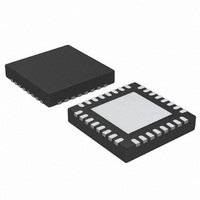TDA8262HN/C1,118 NXP Semiconductors, TDA8262HN/C1,118 Datasheet - Page 26

TDA8262HN/C1,118
Manufacturer Part Number
TDA8262HN/C1,118
Description
IC SATELLITE TUNER 32-HVQFN
Manufacturer
NXP Semiconductors
Type
Satellite Tunerr
Datasheet
1.TDA8262HNC1118.pdf
(30 pages)
Specifications of TDA8262HN/C1,118
Package / Case
*
Applications
Demodulation
Mounting Type
Surface Mount
Bus Type
I2C
Maximum Agc
60 dB (Typ)
Maximum Frequency
2175 MHz
Minimum Frequency
950 MHz
Modulation Technique
QPSK
Mounting Style
SMD/SMT
Function
Satellite
Noise Figure
7.7 dB
Operating Supply Voltage
3.3 V
Supply Voltage (min)
3.15 V
Supply Voltage (max)
3.45 V
Minimum Operating Temperature
- 20 C
Maximum Operating Temperature
+ 85 C
Lead Free Status / RoHS Status
Lead free / RoHS Compliant
Lead Free Status / RoHS Status
Lead free / RoHS Compliant, Lead free / RoHS Compliant
Other names
935275321118
TDA8262HN/C1-T
TDA8262HN/C1-T
TDA8262HN/C1-T
TDA8262HN/C1-T
Philips Semiconductors
18. Handling information
19. Soldering
9397 750 13194
Product data sheet
19.1 Introduction to soldering surface mount packages
19.2 Reflow soldering
19.3 Wave soldering
Inputs and outputs are protected against electrostatic discharge in normal handling.
However, to be completely safe, it is desirable to take normal precautions appropriate to
handling integrated circuits.
This text gives a very brief insight to a complex technology. A more in-depth account of
soldering ICs can be found in our Data Handbook IC26; Integrated Circuit Packages
(document order number 9398 652 90011).
There is no soldering method that is ideal for all surface mount IC packages. Wave
soldering can still be used for certain surface mount ICs, but it is not suitable for fine pitch
SMDs. In these situations reflow soldering is recommended.
Reflow soldering requires solder paste (a suspension of fine solder particles, flux and
binding agent) to be applied to the printed-circuit board by screen printing, stencilling or
pressure-syringe dispensing before package placement. Driven by legislation and
environmental forces the worldwide use of lead-free solder pastes is increasing.
Several methods exist for reflowing; for example, convection or convection/infrared
heating in a conveyor type oven. Throughput times (preheating, soldering and cooling)
vary between 100 seconds and 200 seconds depending on heating method.
Typical reflow peak temperatures range from 215 C to 270 C depending on solder paste
material. The top-surface temperature of the packages should preferably be kept:
Moisture sensitivity precautions, as indicated on packing, must be respected at all times.
Conventional single wave soldering is not recommended for surface mount devices
(SMDs) or printed-circuit boards with a high component density, as solder bridging and
non-wetting can present major problems.
To overcome these problems the double-wave soldering method was specifically
developed.
If wave soldering is used the following conditions must be observed for optimal results:
•
•
below 225 C (SnPb process) or below 245 C (Pb-free process)
– for all BGA, HTSSON..T and SSOP..T packages
– for packages with a thickness
– for packages with a thickness < 2.5 mm and a volume
below 240 C (SnPb process) or below 260 C (Pb-free process) for packages with a
thickness < 2.5 mm and a volume < 350 mm
thick/large packages.
Rev. 01 — 14 December 2004
2.5 mm
3
so called small/thin packages.
Fully integrated satellite tuner
© Koninklijke Philips Electronics N.V. 2004. All rights reserved.
350 mm
TDA8262HN
3
so called
26 of 30














